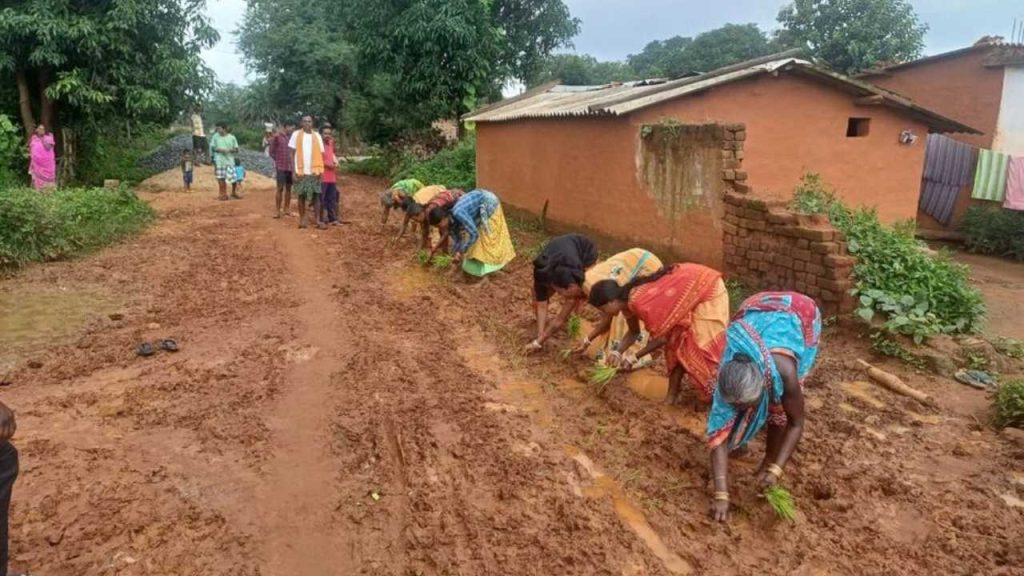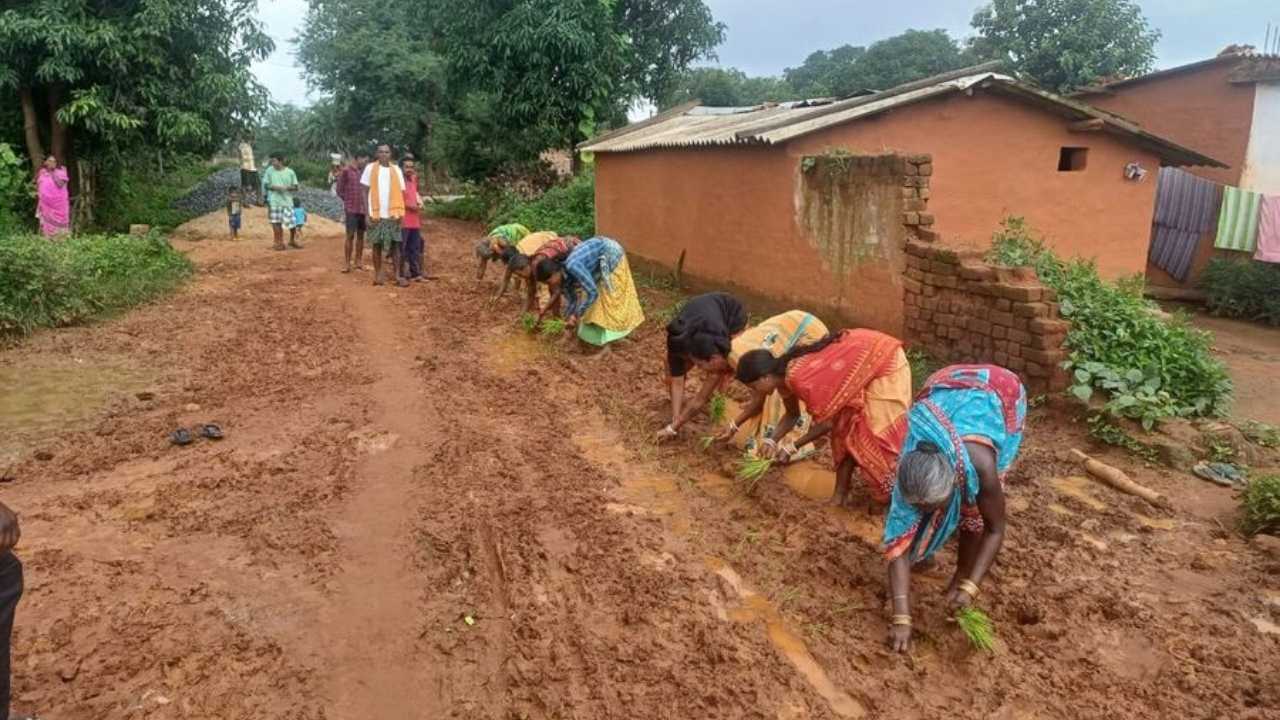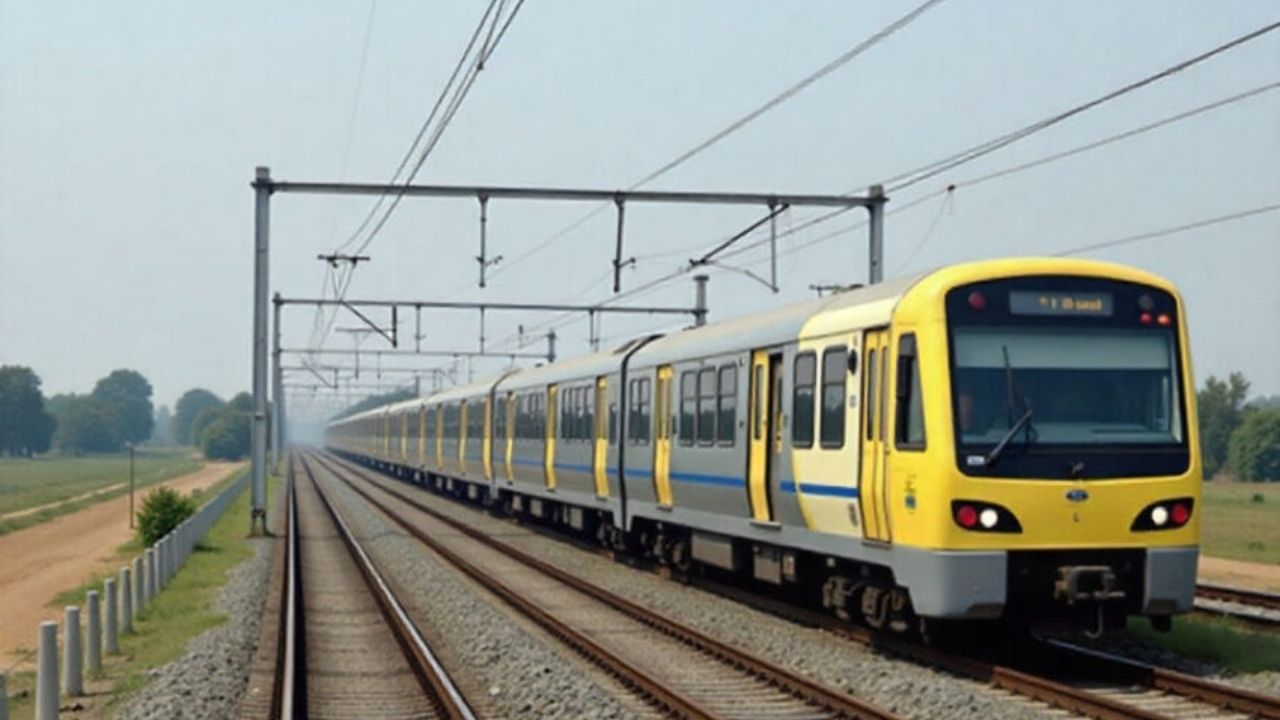When you hear “Muddy Road Turns Protest Site as Villagers Plant Rice Saplings in Odisha”, it sounds almost like a scene straight out of a folk tale. But this isn’t fiction—it’s real life. Imagine a country road so torn up by monsoon rains that locals can’t even get to work, school, or the hospital. Instead of just complaining, villagers in Odisha, India, decided to take matters into their own hands—literally by planting rice in the mud.

That’s right. Folks in Erasama block, Jagatsinghpur district transformed a soggy, nearly impassable dirt road into a symbolic rice field. Their message? If the government won’t fix it, at least we can grow crops on it. It’s a mix of humor, grit, and frustration—but it also shines a spotlight on bigger issues of rural infrastructure, community resilience, and government accountability.
Muddy Road Turns Protest Site as Villagers Plant Rice
| Point | Details |
|---|---|
| Event | Villagers in Nuadihi panchayat, Odisha planted rice saplings on a muddy road as a protest. |
| Cause | Repeated government neglect and poor road conditions during monsoons. |
| Impact | Villagers face hardships: schoolchildren stranded, patients carried by tractors, emergency services delayed. |
| Government Response | Officials promised repairs after the monsoon using emergency funds. |
| Bigger Picture | Similar protests in Nabarangpur, Balikuda, and Koraput districts show widespread rural frustration. |
| Official Source | Government of Odisha – Rural Development |
The story of villagers planting rice saplings on a muddy road in Odisha is more than just a viral photo-op. It’s about ordinary people finding extraordinary ways to demand basic rights. It highlights a universal truth—whether in India or the U.S.—that infrastructure is not just about roads and bridges. It’s about dignity, opportunity, and survival.
Why Villagers Chose Rice Planting as Protest
Planting paddy saplings on a muddy road wasn’t just random. In Odisha, rice is more than food—it’s culture, livelihood, and identity. By planting rice in the very spot where people should be able to walk or drive, villagers sent a sharp, symbolic message: This isn’t a road anymore, it’s a field.
- Frustration with inaction: Repeated complaints to the Rural Development department fell on deaf ears.
- Making noise without violence: Instead of blocking highways or fighting, villagers used creativity and humor to grab media attention.
- Cultural symbolism: Rice farming is central to Odisha’s rural communities. Turning a road into a field connects deeply with everyday life.
Think of it like folks in the U.S. planting corn stalks in the middle of a pothole-ridden highway—sounds absurd, but it sure would get the DOT’s attention, right?
The Hard Truth: Rural Road Challenges in India
According to India’s Ministry of Rural Development, around 40% of rural habitations lacked all-weather road connectivity as recently as a decade ago (World Bank Report). While big strides have been made under the Pradhan Mantri Gram Sadak Yojana (PMGSY) program, the reality is that seasonal flooding and poor maintenance leave many roads impassable.
Here’s what the villagers face daily:
- Emergency services blocked: Imagine trying to get an ambulance through knee-deep mud. Not happening.
- Kids can’t reach schools: Children walk long distances and often have to turn back.
- Farmers lose access to markets: Crops rot while waiting for transport.
It’s like having a freeway in the U.S. collapse every time it rains—except these are small rural lifelines, and people have no alternative routes.
How Such Protests Work
Here’s a simple breakdown of how these grassroots protests evolve:
1. Community Meetings
Villagers gather at the panchayat (village council) hall to air grievances. Complaints are drafted and sent to officials.
2. Ignored Appeals
With no action from local government, frustration builds.
3. Symbolic Action
Residents choose a highly visible and symbolic method—like planting rice on the road.
4. Media Coverage
Photos and videos go viral. News outlets like The New Indian Express and Times of India pick up the story.
5. Government Response
Officials finally show up, promising funds or temporary fixes—though real results often lag.
Similar Protests Across Odisha
This isn’t a one-off event. Planting saplings on roads has become a trend:
- Balikuda block, 2024: Residents of Sankarshai village turned a 1-km stretch into a mini paddy plot.
- Nabarangpur, 2025: Villagers of Adivasiguda carried patients by tractor because no vehicle could pass, so they staged a sapling protest.
- Koraput, 2023: People of Pabaliguda warned they’d boycott elections unless the 2-km muddy road was fixed.
Each protest may look quirky on the surface, but at its heart, it’s about dignity and survival.
Practical Takeaways for Policymakers and Citizens
If you’re a policymaker, planner, or even just someone curious about rural infrastructure, here are lessons worth noting:
- Listen Early, Act Early – Address complaints before they become public protests.
- Invest in All-Weather Roads – Concrete and tar may cost more upfront, but they save years of frustration.
- Community Monitoring – Empower locals to oversee road projects, ensuring contractors don’t cut corners.
- Leverage Media Wisely – Coverage puts pressure on officials but also spreads awareness globally.
- Think Sustainability – Combine road-building with flood-proofing measures.
Women Dominate Odisha Yatri: Over Half of Riders Are Female
Odisha’s Detention Nightmare: Bengal Migrant Worker Moves to Tamil Nadu for Rs 1,000 a Day
Direct Flights Between Odisha Capitals Begin Aug 16 — Jharsuguda to Bhubaneswar by Air
FAQs
Why do villagers plant rice on roads in Odisha?
It’s a symbolic protest showing that the road is so broken it’s more like farmland than a usable path.
How common are such protests?
Very common in rural Odisha and other Indian states. Similar acts have been seen in Nabarangpur, Koraput, and Jagatsinghpur districts.
Has the government responded?
Yes, usually after media coverage. Officials often promise repairs, but implementation can be slow.
What is the long-term solution?
All-weather, flood-resistant rural roads and stricter monitoring of infrastructure projects.
Are similar protests seen in the U.S.?
Not quite, but Americans have planted flowers in potholes as a cheeky way to call out poor road maintenance.





